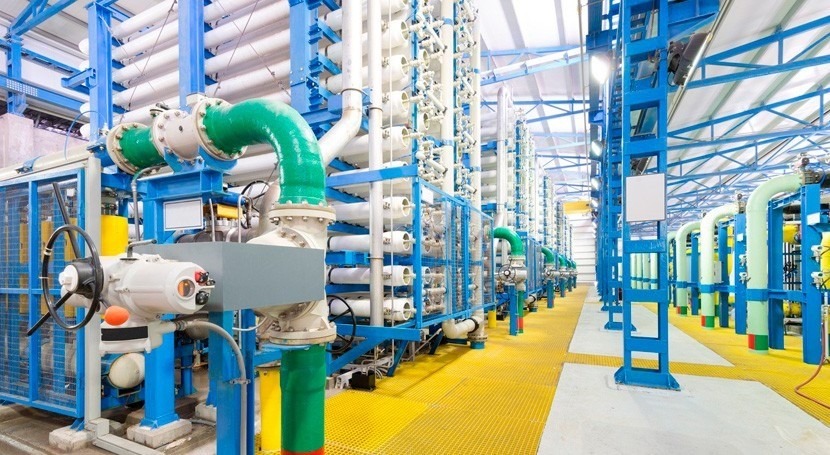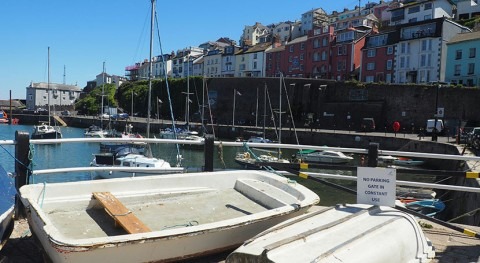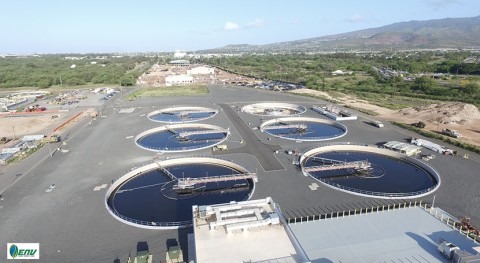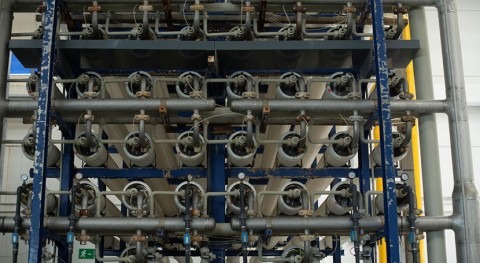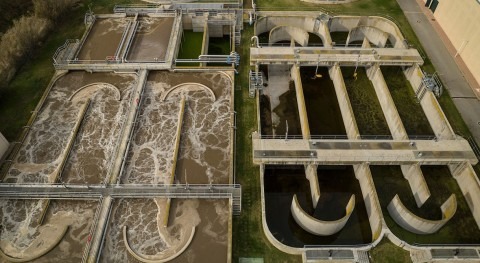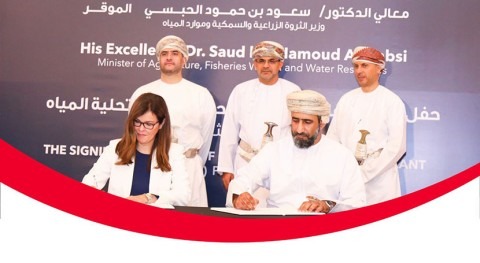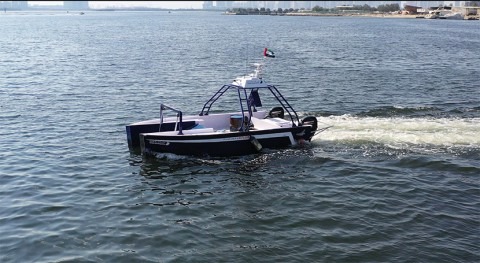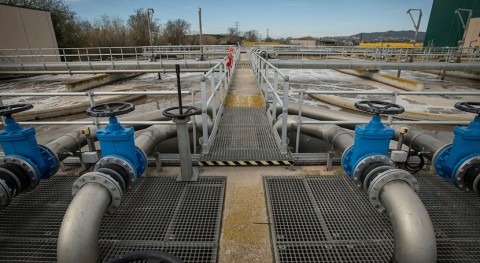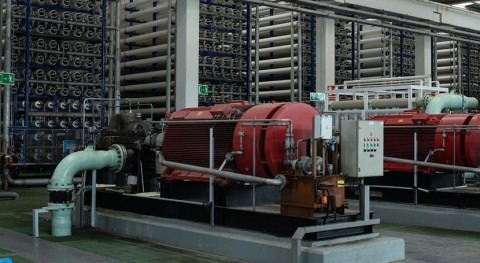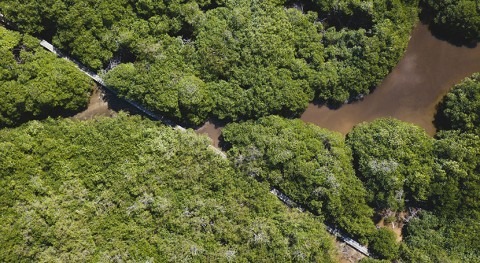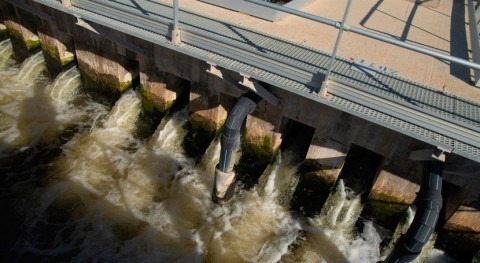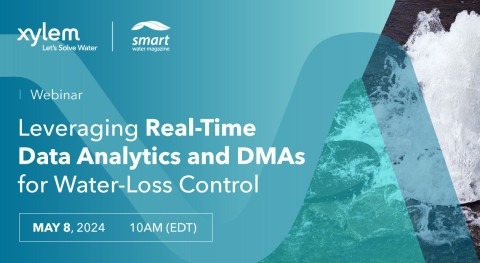The Spanish Association of Desalination and Water Reuse (AEDyR) has released an article in which ten certainties about water desalination are argued and false myths about this process that have been maintained over time are dismantled.
1. Desalinated water is NOT expensive
At present, the cost of producing desalinated water from the sea ranges between 0.5 and 1.0 euro per cubic meter (1,000 liters). And the cost of desalinating brackish water is even lower: 0.3 and 0.5 €. This includes the amortization of the infrastructure, operation, maintenance and energy, which accounts for the largest percentage of the costs. If translated into liters, a liter of desalinated water costs between 0.0003 and 0.0010 euros.
This cost makes it a suitable water resource for use as a water supply, for agricultural irrigation and for various industrial uses, either as service water or as a raw material.
2. Desalination does NOT consume a lot of energy
The energy consumption of a desalination plant is currently around 3 kWh/m3, i.e. 0.003 kW is needed to produce one liter of fresh water.
The cost of producing desalinated water from the sea is between €0.5 and €1.0 per cubic meter (1,000 liters). And the cost of desalinating brackish water is even lower: 0.3 and 0.5 €.
This means that the energy consumption required to produce desalinated seawater for a family of four for one year is equal to the consumption during that time of that family's refrigerator. Or, taking into account that the average daily consumption of that family would be 600 liters, if all the water needed in their home were desalinated seawater, the associated daily electricity consumption would be 1.8 kWh, which is equivalent to that consumed by an air conditioner to heat or cool a room for 1-2 hours.
3. Desalination does NOT have a relevant impact on the marine environment.
Evidence and scientific studies show that the discharge of concentrate from desalination plants, popularly known as brine, does not have a significant impact on the marine environment. The dilution and diffusion systems used in desalination plants ensure that the concentrate is indistinguishable from seawater in terms of salinity and water quality only a few meters from the point of discharge.
In addition, all large desalination plants in Spain are subject to strict controls. Prior to their construction, they must have the Environmental Impact Statement authorized before they can operate. This declaration establishes the place and manner in which the concentrate is to be discharged. There are multiple ways of carrying out this discharge so as not to affect sensitive species, such as the selection of the most appropriate area, the number and type of diffusers, the speed and angle of exit through the diffuser, or prior dilution with seawater.
The energy consumption of a desalination plant is currently around 3 kWh/m3
Likewise, all seawater desalination plants have strict environmental monitoring plans carried out by universities and independent organizations to guarantee the absence of impacts on the marine environment. There is even evidence of an increase in the life of species sensitive to water quality in desalination plant discharges, due to the increase of oxygen in the area, which paradoxically increases fishing at the point of discharge.
It is also necessary to take into account that desalinated water, after its different uses (human consumption, irrigation, industrial), ends up in the sea in the same way as the concentrate, so it is a closed cycle.
4. Spain is a pioneer and has extensive experience and know-how in the construction and operation of desalination plants.
Spain has been building desalination plants for 60 years. The experience and knowledge acquired in their construction and management, and the successful policy of partnership and participation in international tenders, have led Spanish companies to be at the forefront of desalination worldwide, winning tenders for the construction and operation of plants all over the world. Our companies build, supply equipment and operate plants in countries on five continents, such as Australia, Chile, Algeria, Saudi Arabia, Israel, the United States, Oman, the United Kingdom and China.
Many large Spanish desalination plants are equipped with the most innovative technologies for their operation and are frequently visited by delegations from other countries who want to learn about their facilities and experience.
5. Desalinated water is used in agriculture and industry, in addition to its main use as drinking water.
In general, the agricultural user mixes desalinated water with water from other sources to reduce its price and to balance it chemically. But in high value-added greenhouse crops, the cost of water is no more than 5% of production costs, and the economic productivity of this water is between 5 and 7 € per m3, demonstrating that it would even be viable to irrigate these crops with pure desalinated water. The great advantage is that desalination allows farmers to have water available without depending on the weather, which ensures production and makes planning possible.
In industry, desalinated water is used in multiple processes, as service water, in boilers or steam, in the petrochemical industry or in the manufacture of microchips, and also as raw material, for example, for the production of beverages, juices, non-mineral bottled water, beers...
6. Desalinated water tastes good and has excellent quality.
With the desalination technologies currently in use, the water obtained has the same salt content as drinking water, as it strictly complies with the Spanish Royal Decree on Drinking Water (RD 3/2023), as well as the European Directive 2020/2184, the origin of the former. And not only does it comply with drinking water quality standards, but, additionally, as it is treated with reverse osmosis technology to eliminate salts, this filtration barrier eliminates any type of contaminant, both chemical and biological (viruses and bacteria), as well as emerging contaminants, thus guaranteeing extraordinary quality and safety, superior, in fact, to that obtained in drinking water treatment plants with conventional treatment technologies, which are likely to require additional treatments to comply with the current regulations regarding the latter.
More than 21% of the desalinated water produced in Spain is used for agriculture, demonstrating its technical and economic viability
After passing through the reverse osmosis membranes, the water is of such purity that water can be produced "à la carte" during remineralization, adding those nutrients that are necessary according to the recommendations of the Spanish and European health authorities and the World Health Organization. In addition, since the palatability of the water is mainly due to its carbonate content, during this last step, water with different flavor nuances can be created.
7. The concentrate from desalination plants does NOT contain toxic components.
The concentrate from desalination plants is simply seawater that has not passed through the reverse osmosis membranes.
Seawater desalination plants produce approximately 40-45 liters of fresh water for every 100 liters of seawater collected. The 55-60 liters that do not pass through the reverse osmosis membranes contain the same amount of salts that were in the 100 liters of starting seawater. The salt content is the same, but its concentration increases because the volume of water is smaller. Thus, if the seawater contains about 38 grams of salt in each liter of water, the concentrate will be 70 grams of salt per liter. Approximately two tablespoons of salt per liter of water.
The concentrate does not contain any component that does not already exist in seawater and, in addition, it cannot contain any toxic element that may be added during the process. This is because the regulations prevent the addition of any unauthorized substance in drinking water treatment, as is the case in desalination plants or any other drinking water treatment plant (DWTP).
At present, there are studies and projects that consider that the concentrate can become an economic opportunity for the desalination sector and contribute to the circular economy, given that it can be used for the development of other economic activities, such as, for example, electricity generation or aquaculture. There are projects aimed at recovering osmotic energy from the brine and producing what is known as Blue Energy, as well as projects aimed at the economic valorization of this concentrate by recovering certain high-value compounds (brine mining) for industrial use.
8. Desalination plants do NOT emit CO2
Desalination plants do not directly emit any gases into the atmosphere. They do consume electricity from the national grid and, therefore, the CO2 emissions that could be indirectly associated with desalination will be those that come from the grid's energy production systems and from the fossil and renewable energy component, just like any other industry or economic activity.
Therefore, if the percentage of renewable energy in the national electricity grid increases, CO2 emissions that could be indirectly associated with desalination will decrease.
9. Desalination IS one of the solutions to combat drought and the effects of climate change.
Water desalination is one more solution and a complement to solve the problems generated by drought and water stress, together with measures such as water saving, the reduction of losses in networks and the reuse of regenerated wastewater and water transfers that can be made technically and socially. Desalination has the advantage that it does not depend on the weather, since it is fed by an inexhaustible source of water, that of the seas and oceans, and can be installed where there is a deficit.
Desalination plants have no direct emissions to the atmosphere.
In addition, desalination plants serve as facilities that ensure the supply of water to the population, even though they may be shut down or with a usage rate of less than 100% during periods when water from natural sources, if any, is used.
10. Desalination IS a sustainable activity
The Earth's water is neither created nor destroyed, it is only transformed, polluted and decontaminated during the hydrological cycle. The water molecules we consume today were created millions of years ago. The production of fresh water from seawater mitigates the effects of climate change without depleting inland water resources, both surface and groundwater. This is recognized by the European Union, which has included desalination among the activities aligned with the European Green Taxonomy.
Desalination also aligns with the goal of climate change adaptation and contributes directly or indirectly to the achievement of most of the Sustainable Development Goals of the 2030 Agenda.
In addition, the sector is committed to continuously improving the sustainability of this technology. This is achieved through the increasing use of renewable energies, the optimization of the seawater concentrate return process to minimize any environmental impact, the significant reduction of energy consumption and the search for ways to revalorize the concentrate, among other initiatives.

